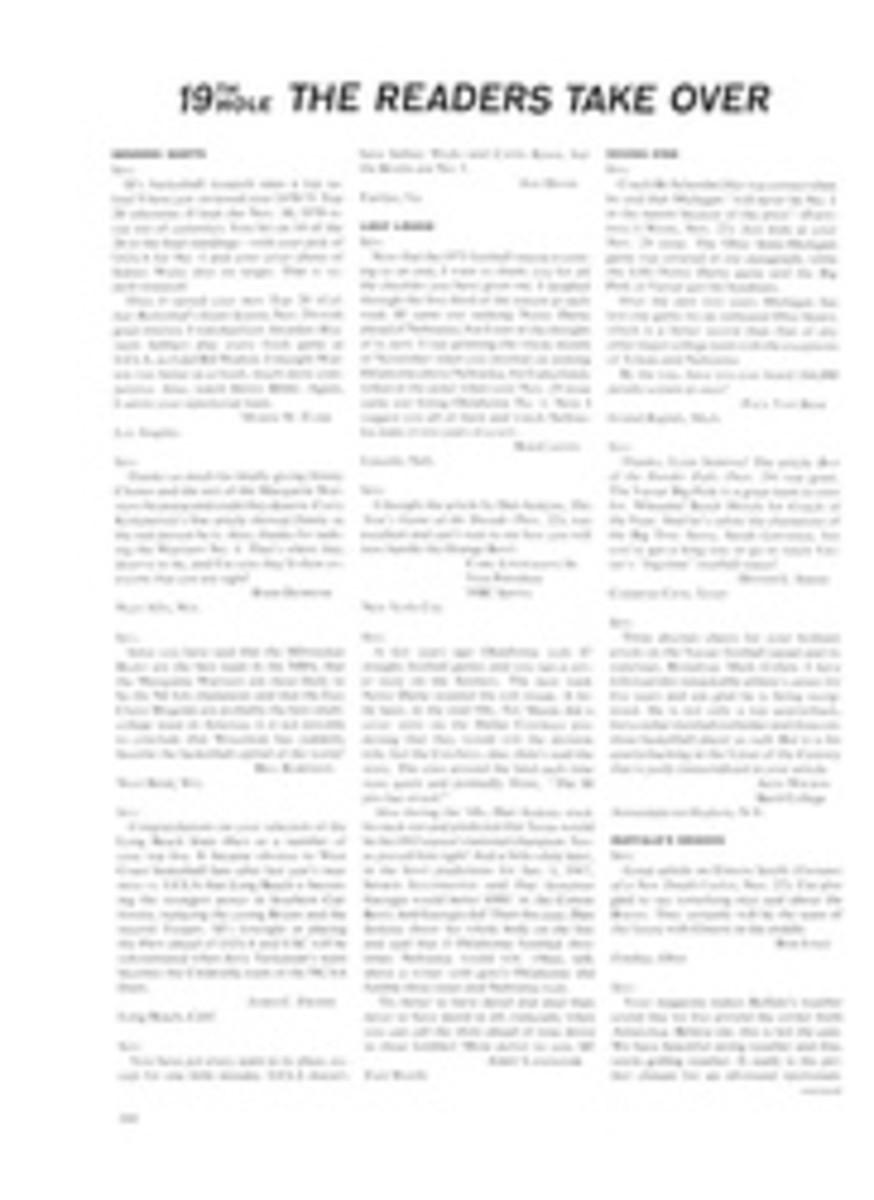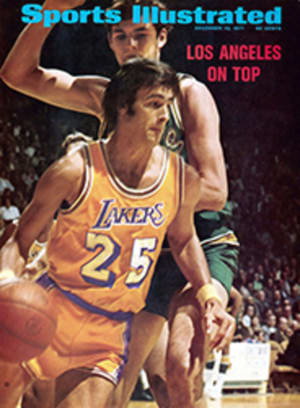
Time to Pick up the Decoys
The canvasback of the Atlantic Flyway is not, officially, an endangered species. He numbers about 100,000 now, not much more or less than he did a decade ago. But what is extinct, as the daily bag limit on the Chesapeake Bay "can" has fallen from 15 to 10 to four to two to one, is a sporting way of life. The canvasback is nostalgia on the wing, and the hunting of him, in the grand and proper way, had no more hope of surviving the '50s and '60s than the Pullman car or the live-in maid. The times doomed him, as Canada's farmers drained his breeding grounds, his rivers came up sludge and his flyway turned to smokestacks. Unlike the mallard and Canada goose, the canvasback takes unkindly to the notion of living in the backyard of man. His imperiousness will be the death of him.
For as long as half a century the hunting of the canvasback on the Susquehanna Flats was the wildfowling counterpart of salmon fishing on the Restigouche. The aristocratic practitioners—"my sports." guides used to call them—were Morgans and Mellons and Wanamakers. Gunning was the economic salvation of Havre de Grace, a town perched on the south bank of the Susquehanna where the river's huge mouth opens toward the bay. The numbers of ducks that came to feed on the wild celery grass peculiar to this small region were all but beyond belief. Jim Fairing, who was probably the best-known guide in the area, estimates that in those good years 7 million to 8 million ducks moved through the Flats.
The pursuit of the canvasback, then as now, involved much effort and expense. As late as 1950 I airing used a 55-foot inboard cruiser, several small boats, 2,700 decoys worth about $4 apiece and five blinds. To hunt the Chesapeake canvasback in any minimal fashion today takes 100 decoys, a $1,500 blind, a boat and the willingness to brawl with some of the most severe conditions that sport demands of gunners. To weigh this commitment against a one-bird limit is to understand why the sport has vanished.
The battle for blind sites in the '30s and '40s was in itself a duel of endurance and wits. licenses were put on sale Oct, 15, and days ahead of time the ne'er-do-wells at the Harford county seat, Bel Air, would be hired to stand in line, the location of the blind desired affixed to their weaving, bobbing hats so that later arrivals would know which sites were already claimed.
At that time in Havre de Grace there were 14 decoy makers, each turning out as many as 2,000 canvasbacks a season. No other decoy was made. In fact, most other ducks were spurned by gunners as unworthy. The redhead was fine, the black duck if he happened close, but the blackhead was a so-so thing best left to those unfortunates on down the Eastern Shore of Maryland who thought they knew something of hunting but were, in truth, plebeians of the sport. So seriously did Havre de Grace take its ducking that the uninitiated might easily betray himself. A visitor recalls walking into a store there in January 1940 during a drenching rain and remarking, "Nice day for ducks."
"Is not," the shopkeeper said. "Northwest wind."
The canvasback had long been a prized quarry, both for the out-of-state millionaire and the local gunner, for whom the illegal marketing of cans represented a meaningful share of his annual income. A 1910 price list on Baltimore's docks shows a pair of prime canvasbacks bringing $7 wholesale (compared to $2 for a goose). The natives of the Flats, like the natives of most areas, were not what could be described as conservation-conscious. The limit was what you did not get caught with, just as it always had been, and the indignities of the days you froze for nothing—of which there were many—were balanced by the times you took home, well, some.
All of which seems less reprehensible years later, for it is generally agreed that it is not the hunter who has brought the canvasback to the brink of nonexistence but our industrial society. Jim Fairing finally gave up guiding and sold his boats, decoys and blinds. But a waterman forever, he is still on the Flats each day. "All last year," he says, "I saw 175 canvasbacks. That was it." Now there is hardly a guide who will bother taking clients duck hunting on the Flats. And there are only two decoy makers left in Havre de Grace. The best known is Madison Mitchell, and he is 70. It is apt that he is the town's undertaker, too, and he says it is just as well that he never got out of the funeral business, though many times in the glory days he was sorely tempted.
Which is not to say that Madison Mitchell could not sell every decoy he could ever make. Each of them is going to end up on a lamp or a bookshelf some where, just as sure as the head is fixed on firm with the 30-penny nails that mark Mitchell's work. And the fact that he still carves each head by hand with the grain running straight and true to the bill to make it stand up under rough handling, and that the keels are of a special design so that the decoy seems to dip and feed in choppy water, and that the body is solid white pine or western cedar out of old phone poles instead of some junk piece of stock, well, it doesn't much matter does it, as long as you don't get careless with the dustrag in the den.
No, the whole thing is gone now, as gone as the shotgun shell made out of rich red cardboard instead of plastic, as gone as the wadding with the chill numbers stenciled on the end that would come flying out at every shot and settle over the decoys like confetti celebrating hits and misses.
Down on the Eastern Shore they used to pray for bitter weal her early so the Flats would freeze and drive the canvasbacks on south. But even when it happened, not many hunters ever got to know the can quite the way the Flats man did. The best of them on the Shore today will tell you that you can't call a canvasback. Of course you can. Back in the early '40s Jim Farring would call them right off Senator Millard Tydings' decoys half a mile away. He could talk to 'em and turn 'em and comfort 'em with a lovely high-pitched whine, a sound unique. And we would sit there, man and boy, and smile and wait. He even taught me how to do it. Sometimes on a winter morning a man feels like trying out that sound again. But it catches in the throat.

